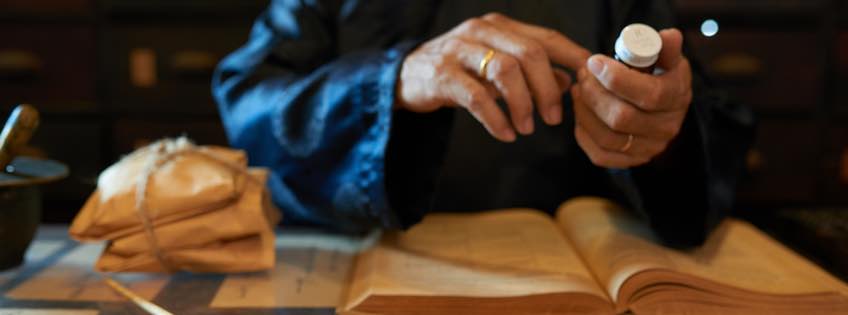8 Methods of TCM Therapy

Treatment of a disease is always carried out according to the cause of the disease, BEN (tree trunk), and the symptoms of the disease, BIAO (tree branches):
- The good qi energy, ZHEN QI, is BEN, the noxious agent, XIE QI, is BIAO.
- The older disease is BEN, the newer one is BIAO (e.g., flu in a patient with hypertension).
- Diseases manifesting themselves inside are BEN, diseases manifesting on the surface are BIAO (e.g., psoriasis in a patient with gallbladder pain).
- In an acute condition, it is always necessary to treat BIAO first, in a chronic condition then BEN (e.g., a patient with internal cold who has contracted tonsillitis).
- In a chronic condition, treatment should always be focused more on BEN – e.g., cough with hotness from yin deficiency, YIN XU, is BEN deficiency of yin (main aspect) and BIAO is cough with hotness (secondary aspect). If deficient yin, YIN XU, (i.e., the primary aspect) is nourished, the cough with hotness (secondary aspect) will naturally subside eventually as well.
8 methods (sorted by frequency of use in practice):
- Cooling, QING
- Dissipation, XIAO
- Harmonisation, HE
- Nourishing, restoring, and strengthening, BU
- Warming, WEN
- Sweating, HAN
- Purging, XIA
- Vomiting, TU
1. Cooling, QING
Use: heat from excess, RE SHI, in the interior LI or harmful fire from excess, HUO SHI
Do not use: in YANG XU, yang deficiency states, RE XU, pseudo-heat caused by insufficient yang, YANG XU, excessive yin, YIN SHI, and stomach qi deficiency, WEI QI.
2. Dissipation, XIAO
Use: various types of qi energy stagnation, QI ZHI, and accumulation, YU XUE blood blockages, TAN phlegm stagnation, HUO fire stagnation, SHI dampness stagnation, JI SHI food stagnation, SHUI YIN water stagnation.
Do not use: for XU deficiency states without actual accumulation
3. Harmonisation, HE
Use: imbalance between yin and yang, noxious agent half external and half internal, SHAO YANG, conflict between heat RE and cold HAN, imbalance between organs.
Do not use: in case of attack by external noxious agent, XIE QI BIAO, and carefully in the presence of internal noxious agent, XIE QI LI.
4. Nourishing, restoring, and strengthening, BU
Use: in XU deficiency states and that: deficiency of blood, XUE XU, deficient qi QI XU, deficient yin YIN XU, deficient yang YANG XU, deficiency of essence JING XU.
Do not use: in case of attack by external noxious agent, XIE QI BIAO, and carefully in the presence of internal noxious agent, XIE QI LI.
5. Warming, WEN
Use: for states of cold, HAN XU, in the inner part of LI and for states of cold yin, YIN HAN (TAN SHI).
Do not use: in case of hot diseases, WEN BING
6. Sweating, HAN
Use: in case of acute invasion by external noxious agent, XIE QI (wind, cold, heat, drought, lukewarm) into the surface part of BIAO.
Do not use: in case of XIE QI noxious agent in the inner part of LI or in case of severe deficiency, XU LAO.
7. Purging, XIA
Use: in SHI fullness states in the middle burner, ZHONG JIAO, and in the lower burner, XIA JIAO, constipation.
Do not use: in conditions of XU weakness without constipation, be careful during pregnancy.
8. Vomiting, TU
Use: in acute conditions where the noxious agent, XIE QI, is retained in the upper or middle burner – either from painful stagnation of food, JI SHI, in the stomach or from stagnation of TAN phlegm that blocks the upper burner.
Do not use: in pregnancy and in the absence of SHI state in the upper burner.
In case of doubt with the choice of herbal products, we recommend TCM Test Tongue Analysis, which is evaluated by Dr. med. Petr Hoffmann and you will receive a recommendation (herbal products and foods) to your e-mail within 3 days.


